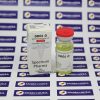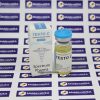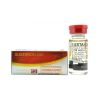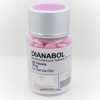updated: 2023/05/17 by Anda Costachescu
In contemporary sports, enhancing athletes’ physical stamina is paramount. Traditional approaches to preparation, such as conditioning, psychological support, and dietary control, are no longer sufficient to reach peak physical performance within a specific timeframe and, ideally, without health repercussions. Consequently, we observe an increased demand for sports-specific steroids categorized by substance. These substances aid athletes in reducing fatigue, augmenting strength, and improving cardio workouts, thereby fostering mental alertness and a competitive spirit.
Globally sanctioned supplements for athletes encompass vitamins and their derivatives, minerals, trace elements, enzymes, adaptogens, antioxidants, psycho-stimulants, immunomodulators, substances regulating neurological and mental health, hepatoprotectors, blood circulation stimulants, and amino acids.
Sport Steroids: Classification
Sports steroids are typically categorized as follows: Mobilizing (depleting) steroids, aimed at rapidly accessing the body’s energy reserves. While these can be potent and have swift effects, they can also be challenging to utilize and may have associated risks. Their side effects include prolonged recovery periods and potential psychological reliance on combatting fatigue. Metabolic (non-depleting) steroids, which deliver a consistent surge of strength and energy, primarily comprise macro-ergs, amino acids, and vitamins. These substances are utilized over an extended duration, their key advantage, with side effects varying among individuals.
Steroids with dual-action work by encouraging glucose synthesis with amino acid elements quickly disseminated throughout the body. However, they inhibit protein generation in muscles. Here, the side effects are more pronounced, including the risk of osteoporosis or muscular dystrophy, weakened immunity, and potential issues with antibody and connective tissue development.
Substances with an indirect impact on performance are administered individually, considering personal fatigue history. Their targeted action enables a flexible and effective response to each unique case, addressing different body pathologies and adverse environmental factors. For instance, radioprotectors shield against ionizing radiation, while nitrates offer protection against angina pectoris.
The most potent sports-enhancing drugs exert a metabolic effect, modifying bodily functions during extended periods of physical and psychological stress. This is manifested in the enhancement of glucogenesis, maintenance of oxidation, and counteraction of acidosis and lactacidemia. Of course, it’s essential to stress that any drug regimen should be guided by a professional consultation or a coach’s oversight, who can determine individual tolerance, dosage, and duration of the course, as well as monitor the ensuing processes.
To further elaborate on this topic, let’s search into the potential benefits and risks associated with sports steroids, the importance of professional oversight, and some emerging trends in sports pharmacology.
Benefits and Risks of Sports Steroids
Sports steroids can significantly enhance athletes’ performance, boosting their strength, endurance, and resilience. They can speed up recovery, allowing athletes to train harder and more frequently. However, while the performance benefits of these substances can be substantial, they should not overshadow the potential health risks. Prolonged or inappropriate use of steroids can lead to a range of adverse effects, including hormonal imbalances, cardiovascular issues, and mental health problems, among others. Furthermore, the misuse of steroids is considered unethical and is generally prohibited in professional sports.
The Importance of Professional Oversight
Given the complex nature of these substances and their potential health implications, professional oversight is crucial when using sports steroids. A qualified healthcare provider or sports medicine professional can offer invaluable guidance, helping athletes to use these substances responsibly and effectively. They can monitor the athlete’s health, adapt the dosage as necessary, and intervene promptly if adverse effects occur.
Emerging Trends in Sports Pharmacology
In recent years, the field of sports pharmacology has seen several exciting advancements. For instance, there’s growing interest in substances that can enhance cognitive function, such as nootropics. These substances could potentially improve athletes’ focus, decision-making, and stress management, offering a new dimension to performance enhancement. Moreover, with the ongoing development of personalized medicine, we might soon see more customized approaches to sports pharmacology, taking into account an athlete’s unique genetic makeup and physiology. This could lead to more effective, safer use of performance-enhancing substances.
While the world of sports pharmacology can offer many opportunities for performance enhancement, it’s essential for athletes to remember the importance of fair play, health preservation, and professional guidance.






